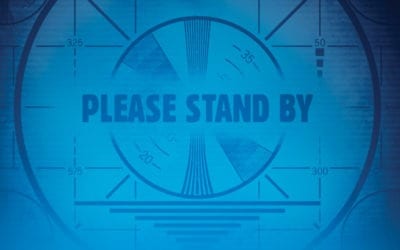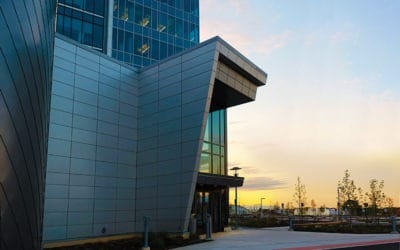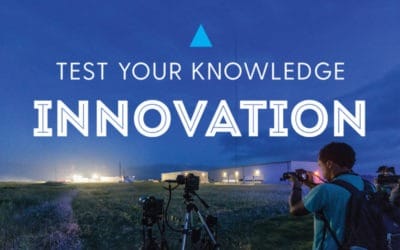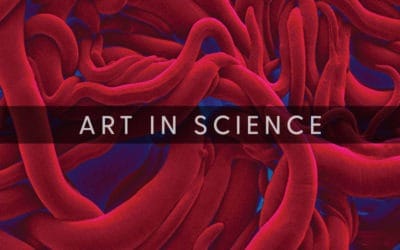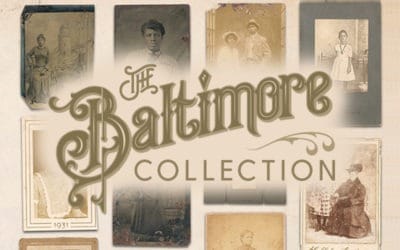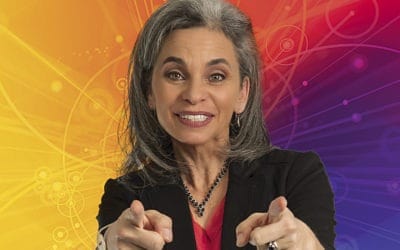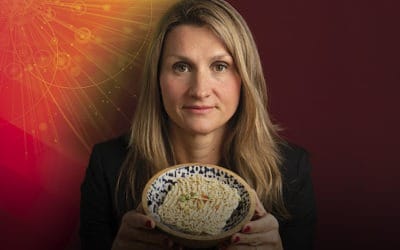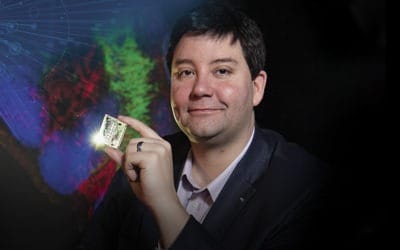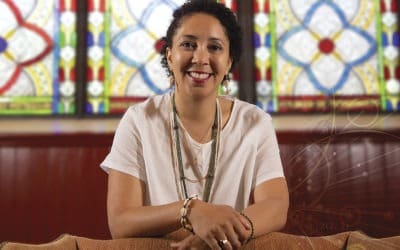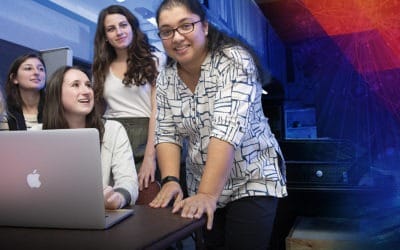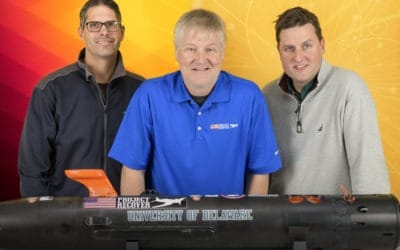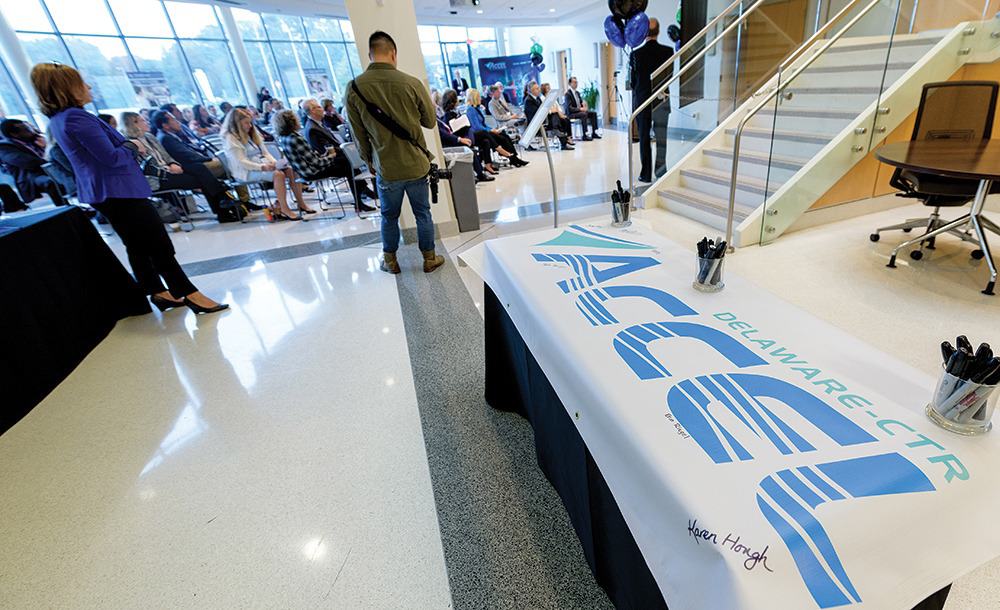 The NIH-funded ACCEL Program is bolstering clinical and translational research to advance patient care in the First State.
The NIH-funded ACCEL Program is bolstering clinical and translational research to advance patient care in the First State.Water, public health research ramps up
The University of Delaware will serve as the administrative base for two recent grants that will address major environmental and health issues facing the First State.
A five-year, $23 million grant from the Established Program to Stimulate Competitive Research (EPSCoR)— a federal-state partnership sponsored by the National Science Foundation—will engage Delaware’s academic institutions in research and training initiatives aimed at boosting water quality. The grant supports activities at UD, Delaware State University, Delaware Technical Community College and Wesley College.
“EPSCoR encourages and insists on collaboration,” Delaware Gov. John Carney said at the January kickoff. “It is a way to build capacity so that we can develop that workforce here in the state of Delaware to address these important issues so that our economy can be stronger in the years ahead.”
Delaware EPSCoR’s Kent Messer, S. Hallock du Pont Professor of Applied Economics for the Environment at UD, said that Water in the Changing Coastal Environment of Delaware (Project WiCCED) will bring together “some of the brightest minds, most dedicated people and most promising students to improve the water quality, step-by-step (or drop-by-drop) for a better future that Delawareans all can enjoy.”
A five-year, $25 million grant from the National Institutes of Health and the state of Delaware will enable Delaware’s Center for Translational Research ACCEL Program to continue its efforts to bolster and expand clinical and translational research in the First State to advance patient care.
As part of the grant renewal, the ACCEL Program grows to five institutions with Delaware State University joining UD, Christiana Care Health System, Nemours/Alfred I. duPont Hospital for Children and the Medical University of South Carolina to support faculty who are interested in research by providing access to needed funding and professional development.
“Collaborating with federal and state government and other academic institutions, we can increase research opportunities and the potential for innovations that improve the health of our residents and our environment,” UD President Dennis Assanis said. “These programs help us train a new generation of researchers who will advance solutions to the challenges that most affect Delaware and the nation.”
Rising
Concerns


Training ethical hackers
On Fridays around 3 p.m., some people start kicking back for the weekend, but the scene is anything but chill in
UD’s Cyber Range. In this dedicated space for cybersecurity training, students gather around computer screens, eat pizza and ask expert professors for advice on cracking the code.
This growing team of computer engineering students is training for their next chance to prove they’re among the best in the country at thwarting cyberattacks. UD’s undergraduate cybersecurity team now ranks among the top 10 U.S. undergraduate university teams.
The students regularly participate in cybersecurity competitions, including “capture the flag,” which challenges a team to find and capture a number of informational flags in the opposing team’s computing system while defending their own system.
Andy Novocin, associate professor, and Nektarios Tsoutsos, assistant professor, both in the Department of Electrical and Computer Engineering, advise the students. This pair of professors is creating a culture of collaboration and creative problem-solving. Through these events, and the practice sessions leading up to them, students learn hardware and software skills to protect devices from security threats, as well as gain experience in communication and teamwork.
“In this battle to protect our infrastructure, it’s about training an army of folks that can do subtle or out-of-the-box thinking in real time to outsmart the bad guys, who are motivated by cash or politics or whatever else,” Novocin said.
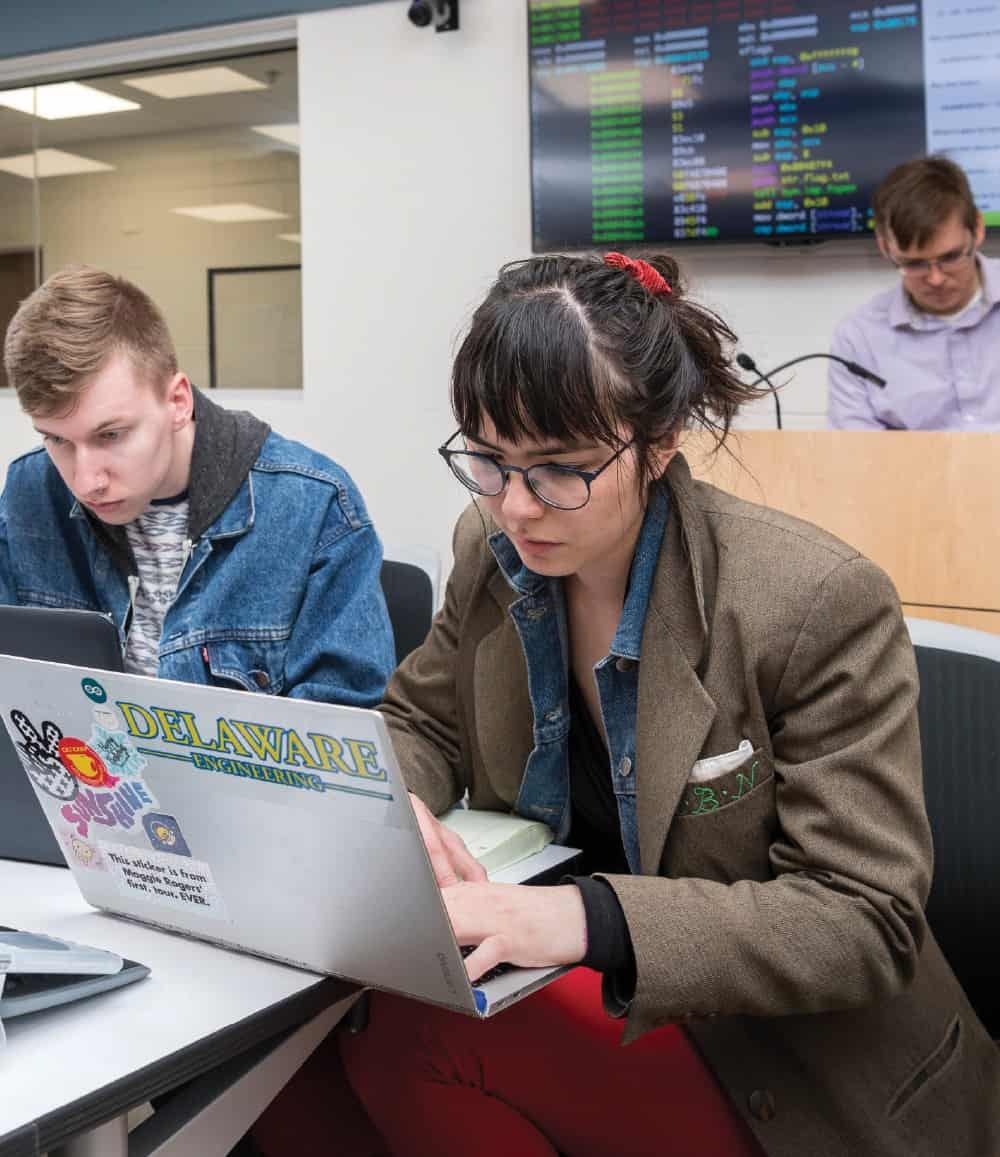

The ‘dreaded’ group project
Hearing the words “team project” can spark fear in the hearts of students and business professionals alike. Does this
perception mean the project is doomed from the start?
Dustin Sleesman, associate professor of management in UD’s Alfred Lerner College of Business and Economics, explored this question with colleagues from Michigan State University, Queen’s University and Iowa State University. Their study, published in Small Group Research, found that the initial beliefs of team members can influence success.
Although their research focused on business students, Sleesman believes the findings are also applicable to team dynamics in the workplace.
Historically, teams in organizations and academic settings could expect to work on multiple projects together over a period of time, allowing team members to get to know each other and work on any issues within the group dynamic as the project progressed.
However, to keep up in today’s competitive marketplace, organizations are now shifting to temporary teams that focus on one short-term task, to increase flexibility and overall project output. Educators are also creating many different group project teams, which form and disband throughout the course of a class. Although in each case, a team’s time together is more compressed, managers or teachers still assume these teams will be effective in yielding high outputs.
Sleesman and his research team found, however, that this view overlooks the many challenges that come with working in either temporary or well-established teams.
“This is the first study to demonstrate that teams are susceptible to the self-fulfilling prophecy effect,” Sleesman said. “Past research has presumed that group-level beliefs take a while to form. Our study found that the perceptions of team members can actually spread and crystallize very quickly. There is a clear implication for team leaders: Once they notice team members saying something negative, or acting as if the team won’t be successful, they need to address it immediately.”
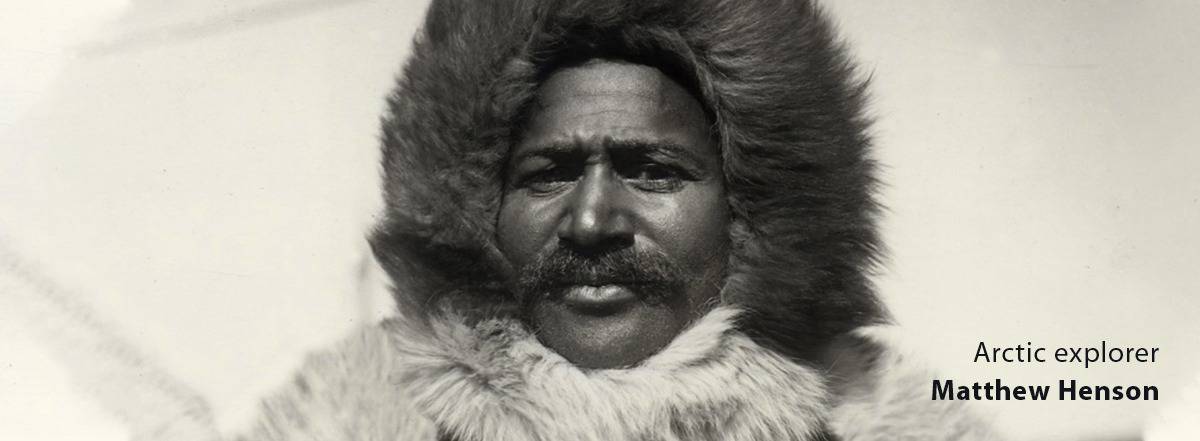
Mittens from 1909 expedition conserved
The way Matthew Henson described it, the brutal cold that punishes those who dare to approach the North Pole is enough to turn a man’s flesh into something like hamburger.
“Freezing of the nose and the whole front of the face is an ordinary occurrence,” he wrote in 1910. “The skin keeps peeling off and freezing again until that part of the face is like raw beef and it leaves spots on the face like smallpox.”
Henson’s hobbling partner in exploration, Robert Peary, had lost nine of his 10 toes to frostbite on one expedition.
So the sealskin mittens Henson wore on April 6, 1909, when he and Peary and four Inuit guides reportedly became the first to reach the North Pole, deserve a good bit of credit for keeping the brilliantly resourceful Henson alive.
Whether they were first or nearly first at the pole (debate continues), Henson was without question the first African-American to sledge across the shifting ice of the Arctic Sea and stand on top of the world.
“The people at the Winterthur/UD program have been so incredible and professional—I had no doubts.”
The harsh conditions and the intervening century took their toll on the mittens, though. They were matted, rigidly creased and brittle in some places, compromised by insects in others.
But then they wound up in the hands of Caitlin Richeson, a student in the Winterthur/University of Delaware Program in Art Conservation.
At Richeson’s workbench, they found new life.
Why, you might ask, would the owner of these mittens trust a student to tend to them?
“The people at the Winterthur/UD program have been so incredible and professional—I had no doubts,” said Lacey Flint, the archivist and curator of research collections at The Explorers Club of New York City, to which Henson gave the mittens in 1934. The Explorers Club counts some of history’s most adventurous luminaries, including Henson, among its members.
“I met Caitlin a number of times,” Flint said. “She had done so much pre-research on the expedition and Henson. It was blind faith. I handed them over and said, ‘Good luck.’”
Flint knew Richeson would not rely on luck, of course. She would draw on the skills she gained in the renowned Winterthur/UD program.
She would rely on careful scrutiny, using ultraviolet light, infrared reflectogram examination techniques and X-ray fluorescence spectroscopy to analyze the materials, understand their true condition and develop a treatment plan.
When her plan was approved, she documented each step. She also would develop a storage system to protect the mittens in future travels.
Seeing the treated mittens reminded Flint of Henson’s 150th birthday celebration. She brought the mittens to it, and one of Henson’s great-grandsons picked one up. What he said has stuck with her.
“I feel like I’m shaking hands with my great-grandfather,” he said.
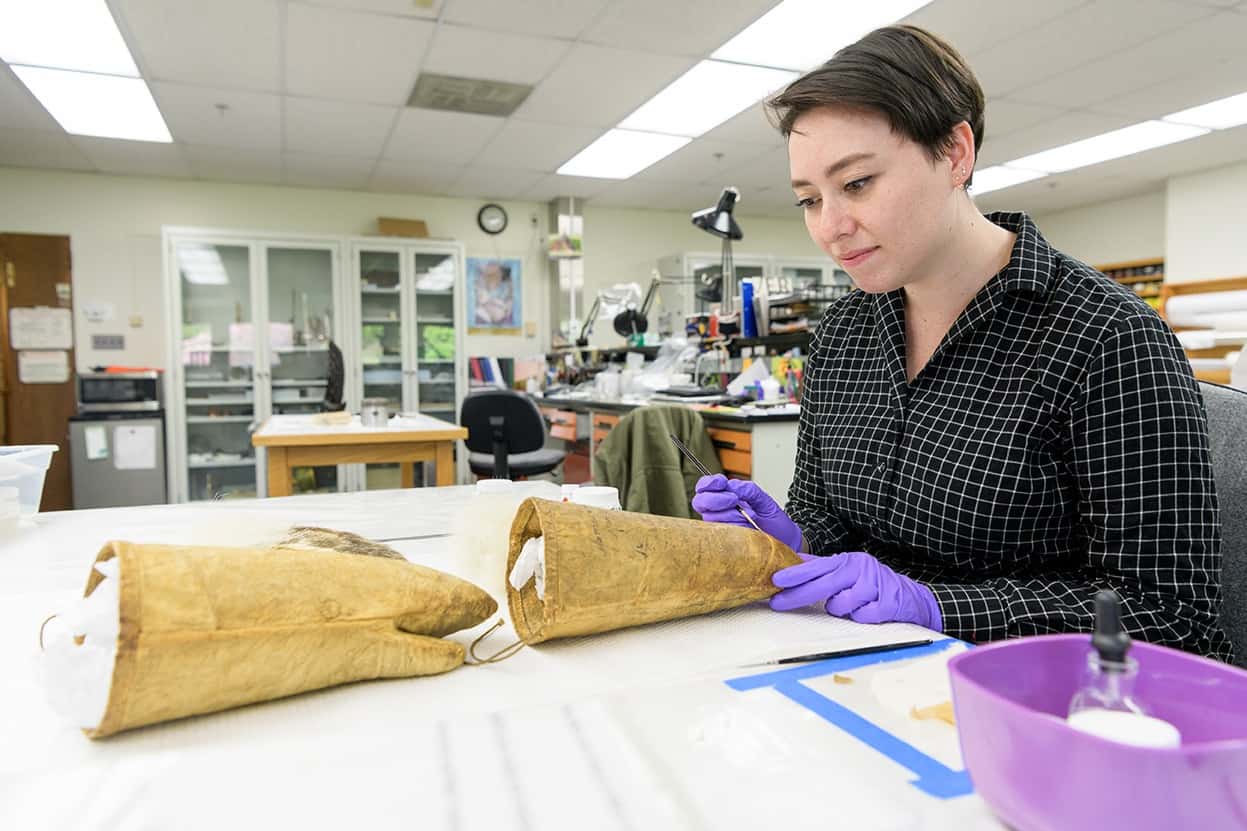
MORE STORIES
From the Vice President for Research, Scholarship and Innovation
A disruptor prevents things from proceeding as usual. But that’s not always bad. In research and education, we’re always turning ideas and methods on their ear in the quest to learn something new…
Innovation In Motion
UD researchers partner with Reebok to build a “smart” sports bra — a sports bra engineered to actually do its job!
Disruptors
This issue of the University of Delaware Research magazine puts new faces on this idea of disruption, highlighting the innovative way our researchers are tackling complex problems. Learn about their work and what drives them and how the disruption they cause can produce real benefit for our world.
Bright Star
UD’s Science, Technology and Advanced Research (STAR) Campus is shining ever brighter with the nationally recognized Tower at STAR.
Test Your Knowledge: Innovation
As a growing research institution, the University of Delaware is a place where you’ll find new ideas constantly sparking solutions to challenges once deemed impossible.The wonder of innovation is all around us, but what do you really know about it? Try your hand at these questions.
Art In Science
Now in its fourth year, this annual exhibit offers a captivating glimpse into a vast world of discovery at the University of Delaware.
The Baltimore Collection
Something truly special emerged from a box that no one expected until Julie McGee, associate professor of Africana Studies and Art History, and her University of Delaware students got their hands on the 53 photographs inside.
Disruptors: Probing the Power of Paradox
A professor of management at UD’s Lerner College of Business and Economics, Wendy Smith focuses on how leaders and teams can effectively respond to contradictory agendas.
Disruptors: Defending Equal Access to Food
How does a new supermarket impact people who live nearby? Can healthy options be found in the little store down the street? These are questions that Allison Karpyn ponders regularly.
Disruptors: Cracking a Cell’s Secret Code
Jason Gleghorn has held a variety of jobs since college—teacher, firefighter, medic, engineer. Today, he’s an interpreter of sorts, too, deciphering the language that cells use to communicate in hopes of advancing new treatments for congenital birth defects, pediatric diseases and more.
Disruptors: Making Our Way
Professor of Africana studies at UD and an ordained elder in the African Methodist Episcopal Church, Monica A. Coleman focuses on the role of faith in addressing critical social and philosophical issues.
Disruptors: Moving Forward with Autism
With skills in physical therapy, behavioral neuroscience and biomechanics, Anjana Bhat brings expansive expertise to her work developing creative therapies for those living with autism spectrum disorders.
Disruptors: Expanding Our World View
These co-founders of the Robotic Discovery Laboratories in UD’s College of Earth, Ocean and Environment manage a growing robotics fleet for use on land, in air and under the sea. They explore questions along the coast, at the poles and in deep regions of the ocean.
Disruptors: Harnessing Beneficial Microbes
So, what do a virologist, botanist and soil physicist have in common? This team from UD’s College of Agriculture and Natural Resources is leveraging their collective expertise to ensure that our food supply is safe and abundant, now and in the future.
Honors
UD researchers have been recognized recently by the National Institutes of Health, American Political Science Association, TED Fellows program, National Science Foundation, National Academy of Inventors and the Gates Cambridge Scholarship program.
CONTACT
Tracey Bryant
Senior Director, Research Communications
Email: tbryant@UDel.Edu
SUBSCRIBE & CONNECT
The University of Delaware Research magazine showcases the discoveries, inventions and excellence of UD’s faculty, staff and students. Sign up for a free subscription.




